Your Complete Guide to Purchasing Hockey Sticks
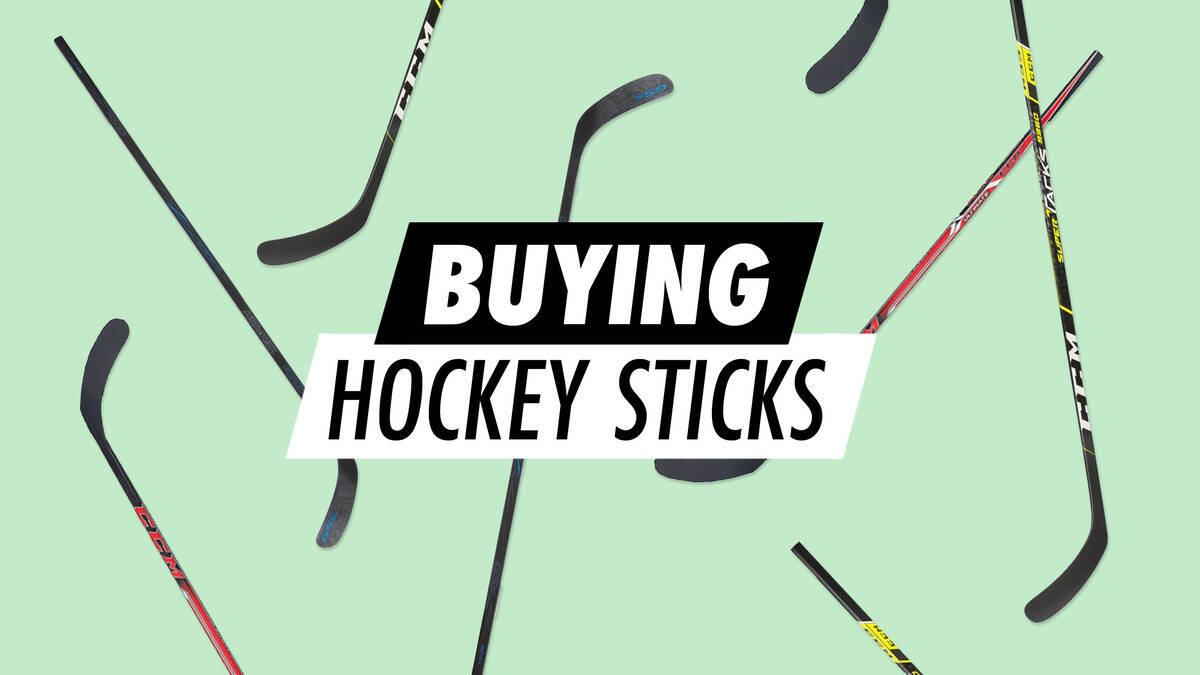
Selecting a new hockey stick hinges on aligning it with your playing level, height, and specific style. It's important to factor in the dimensions, flexibility, and the surface you'll be playing on.
With the plethora of options available, pinpointing the ideal hockey stick can be daunting. Whether you play roller hockey or ice hockey, securing the proper stick is essential for your performance. Below is a breakdown of vital factors to consider when picking the ideal hockey stick based on your style, expertise, and playing conditions.
- Surface Type: Base your choice on whether you are playing on ice, roller, or street surfaces.
- Material: Opt for a stick crafted from a robust yet lightweight material.
- Length: Determine the length of the stick in accordance with your height and playing approach.
- Flex: Select a flex that aligns with your strength and shooting preference.
- Handedness: Decide between left or right based on your gripping technique.
Dive deeper into these aspects by reading on!
Overview
Understanding the Varieties of Hockey Sticks: Ice, Roller, and Street
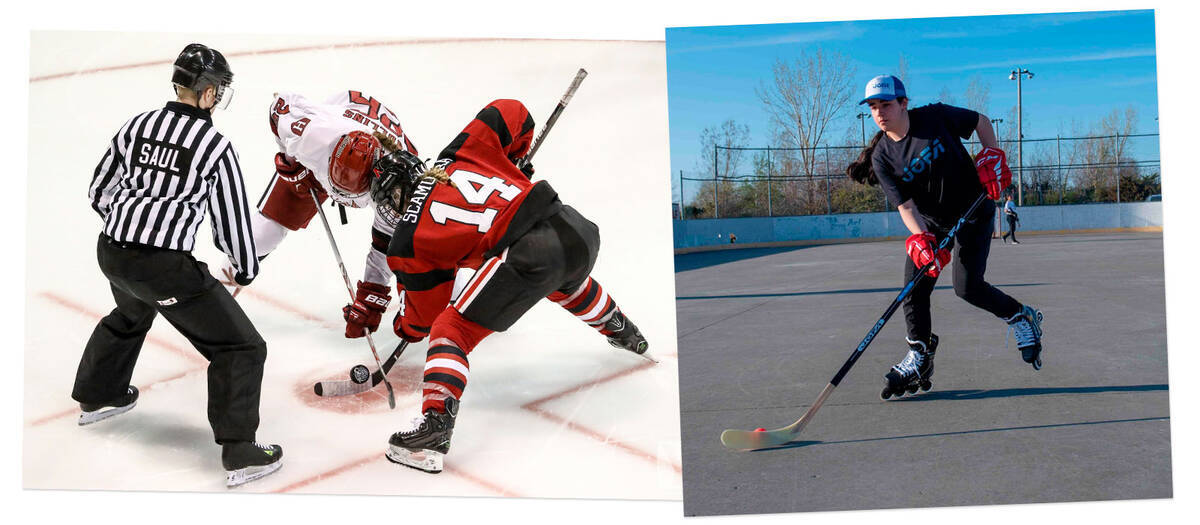
Initially, it's crucial to determine if the stick is intended for ice hockey, roller hockey, or street hockey. The surface you're playing on and your style will significantly influence your stick selection.
- Ice hockey sticks: Exclusively created for use on ice surfaces.
- Roller hockey sticks: Tailored for roller surfaces like smooth asphalt or sport court tiles.
- Street hockey sticks: Designed for rugged outdoor surfaces such as asphalt, typically made from durable materials to withstand damage.
- Multi-purpose hockey sticks: Many sticks cater to general purposes, allowing you to use a single stick for both street and indoor hockey.
When examining the description of any hockey stick product, note if it's meant for a specific type of hockey or surface.
Is an Ice Hockey Stick Suitable for Roller Hockey?
If you possess a stick specific to ice hockey, using it for roller hockey is not advised as the blade will wear quickly on rougher surfaces. It's advisable to utilise a stick for its intended purpose to ensure longevity.
Composition of Hockey Sticks

Hockey sticks are crafted from materials like carbon fibre, fibreglass, Kevlar, and wood, with wood being the traditional choice. Nowadays, it's common to find sticks composed of composite materials, often mixing fibreglass with carbon fibre.
It's noteworthy that a stick's blade is often made from different materials than the shaft. The shaft requires durability and lightness, whereas the blade must endure impactful forces from pucks and balls.
Stick shafts must exhibit a high strength-to-weight ratio and the flexibility to withstand bending without breaking during intense play. Composite materials are often optimised for these properties, though some hardwoods possess these characteristics too.
Stick blades must endure significant impacts without contributing excessive weight for the player to manage. Materials like carbon fibre, fibreglass, wood, or plastic are frequently used. The choice of material and blade shape should ideally aid in controlling the puck and shooting accurately.
Comparing Composite and Wood Hockey Sticks
- Wood hockey sticks: Known for their classic and sturdy nature, wood sticks tend to be heavier, providing a traditional feel. They're commonly used in street or roller hockey due to their resilience.
- Composite hockey sticks: Composed of materials like carbon fibre, Kevlar, or fibreglass, these sticks are lighter and more flexible. While primarily used for ice hockey, they also perform admirably in roller hockey for those seeking high performance. Despite their higher cost, these sticks offer enhanced energy transfer and control.
While navigating our selections of roller and ice hockey sticks, you can filter them by shaft and blade material.
How to Select the Correct Hockey Stick Length

Securing the correct hockey stick length is vital for optimising control and shot power. Consider various factors such as your height, skill level, playing style, and personal liking when selecting your stick length.
Short versus Long Hockey Stick
A short stick grants better control and agility, whereas a long stick offers greater reach. Offensive players tend to favour shorter sticks, while defensive players often opt for longer ones.
Determining the Suitable Hockey Stick Length
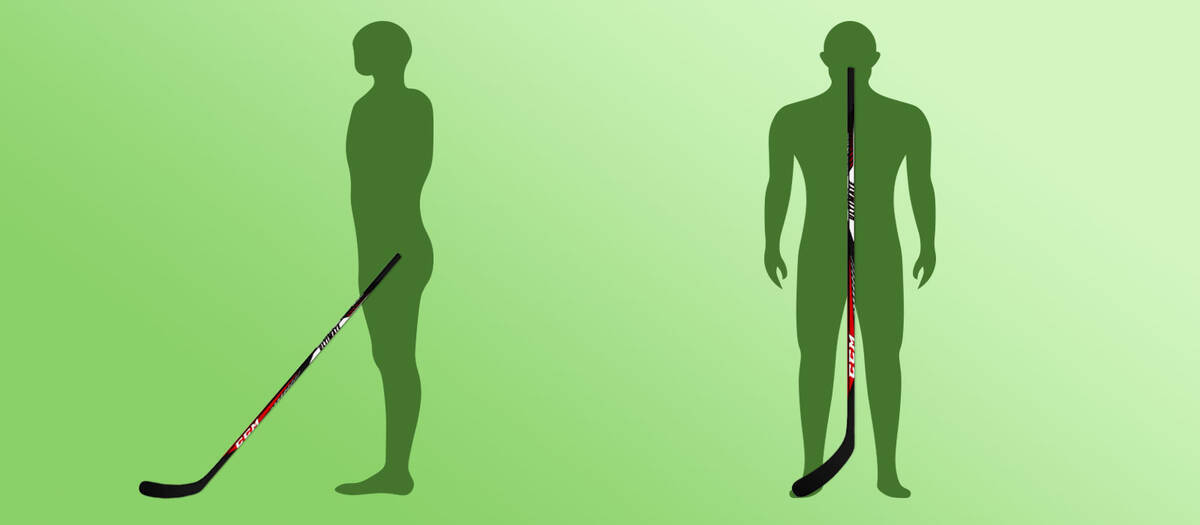
Place your arm alongside your body and, with skates on, grip the stick's end. Slightly bend your arm, keeping it near your body. If the blade's toe lifts slightly, the length is accurate.
Alternatively, stand upright, with or without skates, holding the stick vertically to your chin.
- With skates: The stick's end should not go above your chin.
- Without skates: The stick's end should not exceed the tip of your nose.
Some players opt for sticks slightly longer so they can tailor the length to their liking. This approach is beneficial if you're aware of how to do it, though be mindful that modifying the stick voids any warranty.
Filter our roller and ice hockey stick selections by length to identify available sticks in your preferred measurements. Additionally, consult our hockey stick size guide if you require further guidance.
- View our hockey stick size guide
- Explore our collection of ice hockey sticks
- Explore our collection of roller hockey sticks
Understanding Hockey Stick Flex
Flex describes the extent a stick bends under force, such as during a shot. A higher flex number indicates a stiffer stick. Choosing the suitable flex depends largely on your strength and the shot type you desire.
- Lower flex: Easier for achieving finesse and precision in shooting. Recommended for novices or younger players as they are simpler to manage.
- Higher flex: Enables delivering more forceful shots. Typically preferred by experienced players.
The Importance of the Blade Curve in a Hockey Stick
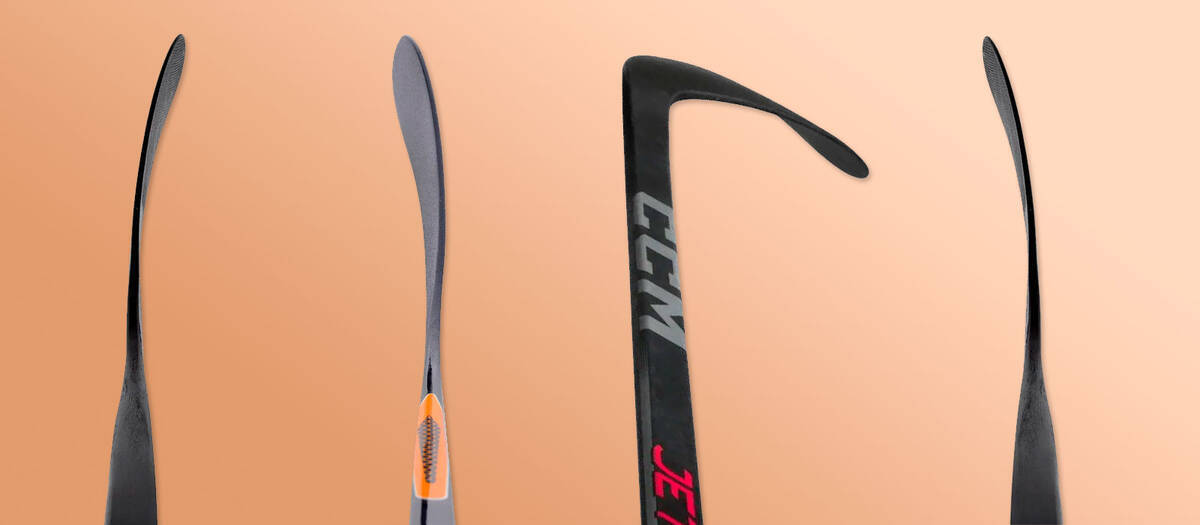
Another significant feature of a hockey stick is its blade curve. It influences puck or ball control during shooting, passing, and dribbling, so it's crucial to consider. Experimenting with different blade curves can assist in selecting one that complements your playing style.
The blade curve forms a 'pocket' for controlling pucks or balls, enhancing control and permitting more consistent, powerful shots.
How to Decide Between a Left-Handed and Right-Handed Hockey Stick
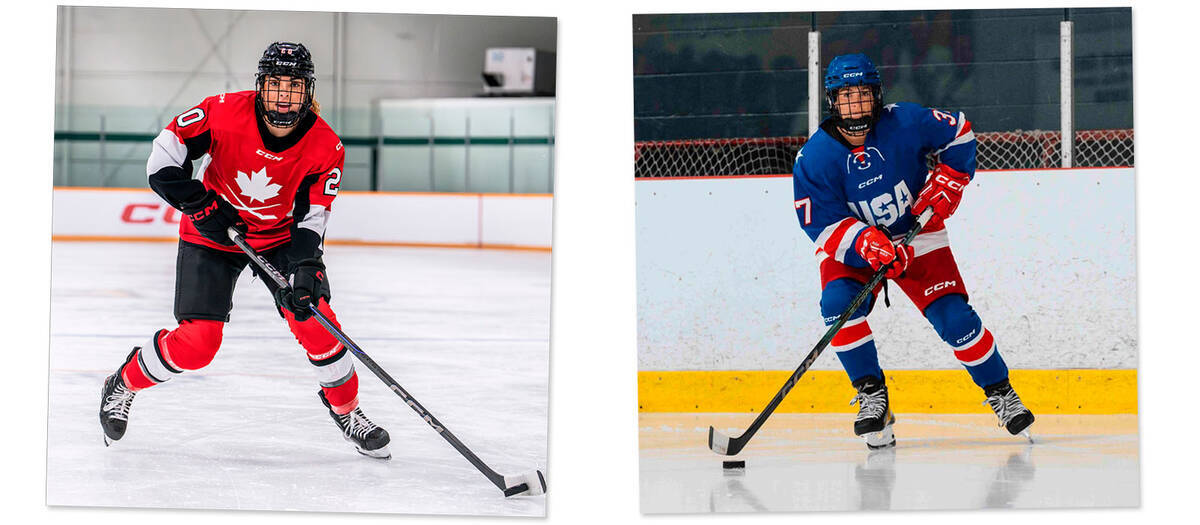
Deciding between a left-handed or right-handed stick is associated with which hand directs the stick. If your right hand is on top, a left-handed stick is ideal (and vice versa). Shooting side is not about being naturally left or right-handed—it's about what feels comfortable.
If you're uncertain, hold a hockey stick with both hands and mimic a shooting stance. Choose a...
- Left-handed hockey stick: When the puck is to your left, right hand at the top, and left hand closer to the blade.
- Right-handed hockey stick: When the puck is to your right, left hand at the top, and right hand nearer the blade.
Watch the video below where Nicklas demonstrates how to identify if you are a left or right-handed hockey player.
Ensure you browse our comprehensive selections for both roller and ice hockey, as we provide all necessary hockey equipment:
